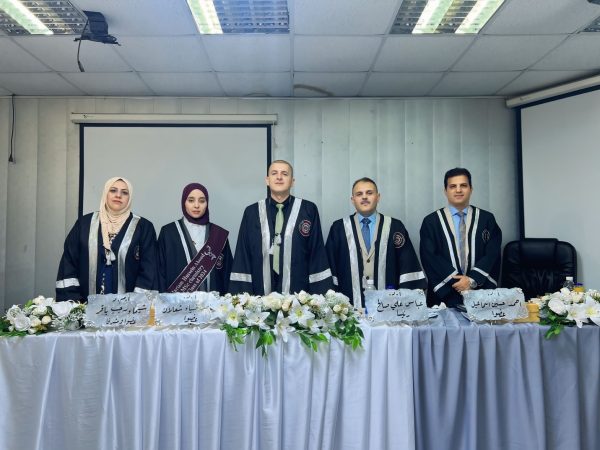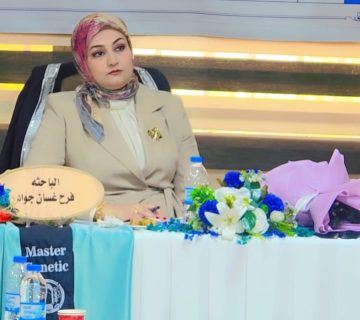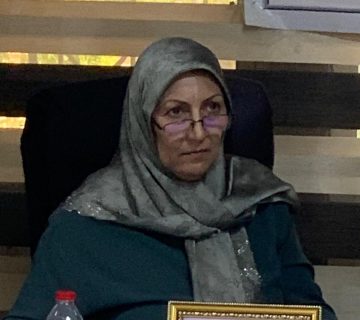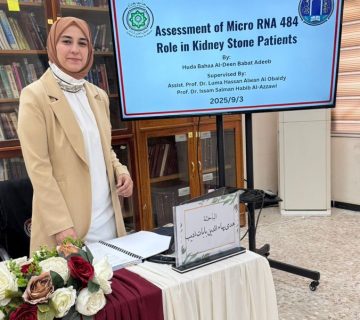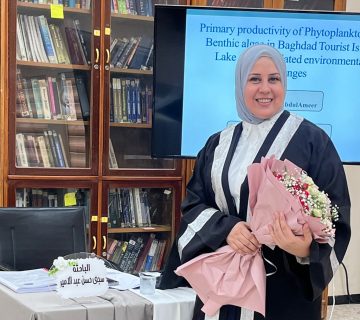The College of Science for Women at the University of Baghdad discussed the Master’s thesis titled “Synthesis, Characterization, and Theoretical Study of a Mixed Ligand Complex of Schiff Bases with 1,10-Phenanthroline and its Antibacterial and Antifungal Activity” by the student: Mariam Hussein Aboud.
The objective of the study is to synthesize new Schiff base ligands and prepare mixed-ligand complexes by reacting these ligands with 1,10-phenanthroline in the presence of metal ions such as Cr(III), Co(II), Ni(II), Cu(II), Zn(II), Mn(II), Pd(II), Cd(II), and Pt(IV). The study also aims to propose structural formulas for the ligands, predict the expected geometries of the synthesized complexes, and evaluate the biological activity of the prepared compounds against Gram-positive and Gram-negative bacterial isolates, as well as one type of fungus.
This study, conducted at the University of Baghdad, College of Science for Women, Department of Chemistry, in the laboratories of the College of Science for Women in Baghdad, Iraq, involved the synthesis of new Schiff base ligands derived from sulfabenzaldehyde, Isatin, and aspartame. The synthesized ligands and mixed-ligand complexes were characterized using various spectroscopic and physical techniques, including Fourier-transform infrared spectroscopy (FTIR), nuclear magnetic resonance spectroscopy (NMR), ultraviolet-visible spectroscopy (UV-Vis), elemental analysis, magnetic susceptibility, molar conductivity, and mass spectrometry. The biological activity of the prepared compounds was evaluated against different types of bacteria (Gram-positive and Gram-negative) and one type of fungus. Furthermore, theoretical studies of the synthesized ligands and mixed-ligand complexes were conducted using the HyperChem 8.0.7 software.
The letter makes the following key recommendations:
- Synthesis of a new Schiff base derived from sulfabenzaldehyde and aspartame.
- Preparation of new Schiff base complexes using other metal ions.
- Investigation of the biological activity against new types of bacteria and fungi.
